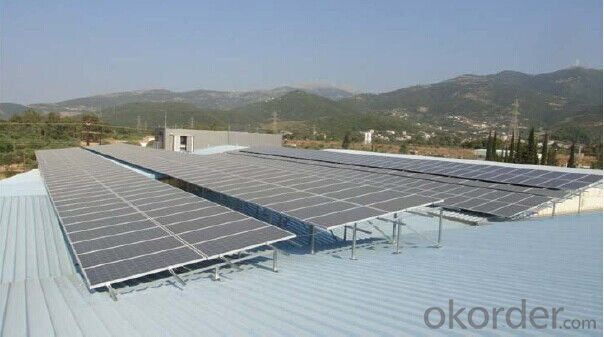Solar Inverter 2500MTL-3000MTL 2MPPT, Single Phase
- Loading Port:
- Shekou
- Payment Terms:
- TT or LC
- Min Order Qty:
- 10 pc
- Supply Capability:
- 100000 pc/month
OKorder Service Pledge
OKorder Financial Service
You Might Also Like
Solar inverter 2500MTL-3000MTL 2MPPT, single phase
Specifications
Maximum efficiency of 98% and wide input voltage range
Internal DC switch
Transformerless GT topology
Multi MPPT
Solar inverter General Descriptions
Leading-Edge Technology
> Maximum efficiency of 97.9 % and wide input voltage range
> Muti MPP controller
> Internal DC switch
> Transformerless H6 topology
> Compact design
> Muti MPP control
> MTL-String
> Bluetooth technology
> Easy installation
> Sound control
Europe /Australia ENS
> Simple national setting of line supply monitoring (ENS)
> Easy country configuration
> Muti-language display
> Currently available for Germany,France,UK,Austria,Switzerland,Italy and Spain
Solar inverter Communications
> RS485 /RS232/GPRS interfaces
> Computer monitoring software
Safety
> Full protection functions:DC reverse polarity, AC short-circuit protection, ground fault monitoring, grid monitoring, integrate all-pole sensitive, leakage current monitoring unit.
> Standards complied: SAA, CE/TUV, EN50178, VDE 0126-1-1,IEC 62109,RD 1663,G83,EN 61000-6-1,EN61000-6-2 ,EN61000-6-3,EN61000-6-4, DK5940, G83, RD1663, VDE-AR-N415, CEI 0-21


Technical Specifications
Model | 2500MTL | 3000MTL |
INPUT DATA | ||
Max. DC Voltage | 500V | 500V |
PV voltage range | 200V~500V | 200V~500V |
MPP Voltage Range | 200V~450V | 200V~450V |
Max. DC Power | 2700W | 3200W |
Max. Input Current | 10A/10A | 10A/10A |
Number of MPP Trackers/ | 2/1 | 2/1 |
Strings Per MPP Tracker | ||
OUTPUT DATA | ||
Nominal AC Output | 2500W | 3000W |
Max.Output Current | 12.5A | 15A |
Grid Voltage Range | 180~280V | 180~280V |
Rated Grid Frequency | 50Hz/60Hz | 50Hz/60Hz |
Output Current THD | < 3% | < 3% |
AC connection | Single phase | Single phase |
SYSTEM | ||
Max. Efficiency | 97.50% | 97.50% |
Euro. Efficiency | 97.00% | 97.40% |
MPPT efficiency | 99.50% | 99.50% |
Protection Degree | IP65(outdoor) | IP65(outdoor) |
Operating Temperature | -25~+60°C | -25~+60°C |
Cooling Method | No fan | No fan |
Display | LCD | LCD |
Standard Comm. Interfaces | RS485/RS232 | RS485/RS232 |
Optional Comm. Interfaces | GPRS/blue tooth | GPRS/blue tooth |
MECHANICAL DATA | ||
Dimensions(WxHxD) | 360/510/188mm | 360/510/188mm |
Net Weight | 15.6kg | 15.6kg |
Solar inverter FAQ
1. Have any design tool and how to use it?
Shine Design is the system design software just for inverters, It can conduct installers to figure out panel numbers for a system, panel numbers for each string, and which inverter model is suitable for the system. Moreover, it can print a design report after input all necessary parameters, can calculate DC/AC wire wastage, annual generation, etc.
2. Does the inverter have monitoring solutions for residential system?
For small rating system, we have wired two monitoring solution (ShineNet via RS232 or RS485). (a) Local wireless monitoring solution (ShineVision via RF module communication) (b) Global wireless monitoring solution (WIFI module via WIFI network)
3. Do you have free solution for monitoring?
ShineNet is an inverter monitoring software run in Windows XP, Windows Vista, Windows 7 operating system. It can monitor inverter via RS232 (or RS232 convert to USB cable) and RS485 wire connection. Customers can purchase the cable locally to get the inverter monitored, it is simple.
- Q:What are the common fault indications in a solar inverter?
- Some common fault indications in a solar inverter include a sudden loss of power output, frequent or recurring tripping of the inverter, abnormal or fluctuating voltage readings, unusual noises or smells emanating from the inverter, error messages or fault codes displayed on the inverter's screen, and physical damage or visible signs of overheating.
- Q:What is the difference between an on-grid and off-grid solar inverter?
- An on-grid solar inverter is designed to convert the DC power produced by solar panels into AC power that can be fed directly into the electrical grid. It synchronizes with the grid and adjusts the power output accordingly. In contrast, an off-grid solar inverter is used in standalone solar power systems that are not connected to the grid. It stores excess power in batteries and converts DC power to AC power for use in the off-grid system.
- Q:Can a solar inverter be used in a ground-mounted solar system?
- Yes, a solar inverter can be used in a ground-mounted solar system. The solar inverter is an essential component that converts the direct current (DC) generated by the solar panels into alternating current (AC) that can be used to power electrical appliances or be fed back into the grid. Whether the solar system is mounted on the ground or on a roof, the inverter's role remains the same, making it compatible with ground-mounted systems.
- Q:How does a solar inverter handle voltage phase imbalance in the grid?
- A solar inverter handles voltage phase imbalance in the grid by continuously monitoring the grid voltage and adjusting its internal control algorithms accordingly. This allows the inverter to dynamically balance the output between the phases, compensating for any phase imbalances in the grid. By doing so, the solar inverter ensures that the electricity it generates and feeds into the grid is well synchronized with the grid's voltage and phase, minimizing any adverse effects of phase imbalance.
- Q:Can a solar inverter be used in areas with unstable grid power?
- Yes, a solar inverter can be used in areas with unstable grid power. Solar inverters are designed to convert the DC power generated by solar panels into AC power for use in homes or businesses. In areas with unstable grid power, a solar inverter can help stabilize the electricity supply by utilizing the solar energy generated. It can operate independently or in conjunction with the grid, providing a reliable power source even during grid outages or fluctuations.
- Q:What is the role of a display interface in a solar inverter?
- The role of a display interface in a solar inverter is to provide real-time information and control options to the user. It allows the user to monitor and understand the performance of the solar inverter, such as the amount of energy being generated, the status of the system, and any potential issues. The display interface also enables the user to adjust and optimize the settings of the inverter, such as voltage and frequency, to ensure efficient operation. Overall, the display interface enhances the user experience by providing visibility and control over the solar inverter's functions.
- Q:Can a solar inverter be used with different battery chemistries?
- Yes, a solar inverter can be used with different battery chemistries as long as the voltage and capacity of the batteries are compatible with the inverter's specifications. However, it's important to note that different battery chemistries may have varying charging and discharging characteristics, so it is advisable to consult the manufacturer's guidelines to ensure optimal performance and safety.
- Q:Can a solar inverter be connected to the grid?
- Yes, a solar inverter can be connected to the grid. In fact, connecting a solar inverter to the grid is a common practice in solar energy systems. The inverter is responsible for converting the direct current (DC) produced by the solar panels into alternating current (AC) that can be used by homes or businesses or fed back into the electrical grid. This allows solar energy systems to generate electricity for consumption while also contributing excess power to the grid.
- Q:Can a solar inverter be used in a mobile or portable solar system?
- Yes, a solar inverter can be used in a mobile or portable solar system. In fact, portable solar systems often include solar inverters to convert the direct current (DC) power generated by solar panels into alternating current (AC) power that can be used to run electrical devices or charge batteries. This allows for the convenience of using solar energy on the go, making it ideal for camping, outdoor activities, and emergency power needs.
- Q:Can a solar inverter be used with concentrated photovoltaic systems?
- Yes, a solar inverter can be used with concentrated photovoltaic systems. Concentrated photovoltaic systems use lenses or mirrors to concentrate sunlight onto high-efficiency solar cells. The solar inverter's role remains the same in converting the DC power generated by the concentrated photovoltaic system into AC power that can be used for various applications.
1. Manufacturer Overview |
|
|---|---|
| Location | |
| Year Established | |
| Annual Output Value | |
| Main Markets | |
| Company Certifications | |
2. Manufacturer Certificates |
|
|---|---|
| a) Certification Name | |
| Range | |
| Reference | |
| Validity Period | |
3. Manufacturer Capability |
|
|---|---|
| a)Trade Capacity | |
| Nearest Port | |
| Export Percentage | |
| No.of Employees in Trade Department | |
| Language Spoken: | |
| b)Factory Information | |
| Factory Size: | |
| No. of Production Lines | |
| Contract Manufacturing | |
| Product Price Range | |
Send your message to us
Solar Inverter 2500MTL-3000MTL 2MPPT, Single Phase
- Loading Port:
- Shekou
- Payment Terms:
- TT or LC
- Min Order Qty:
- 10 pc
- Supply Capability:
- 100000 pc/month
OKorder Service Pledge
OKorder Financial Service
Similar products
New products
Hot products
Hot Searches
Related keywords
































